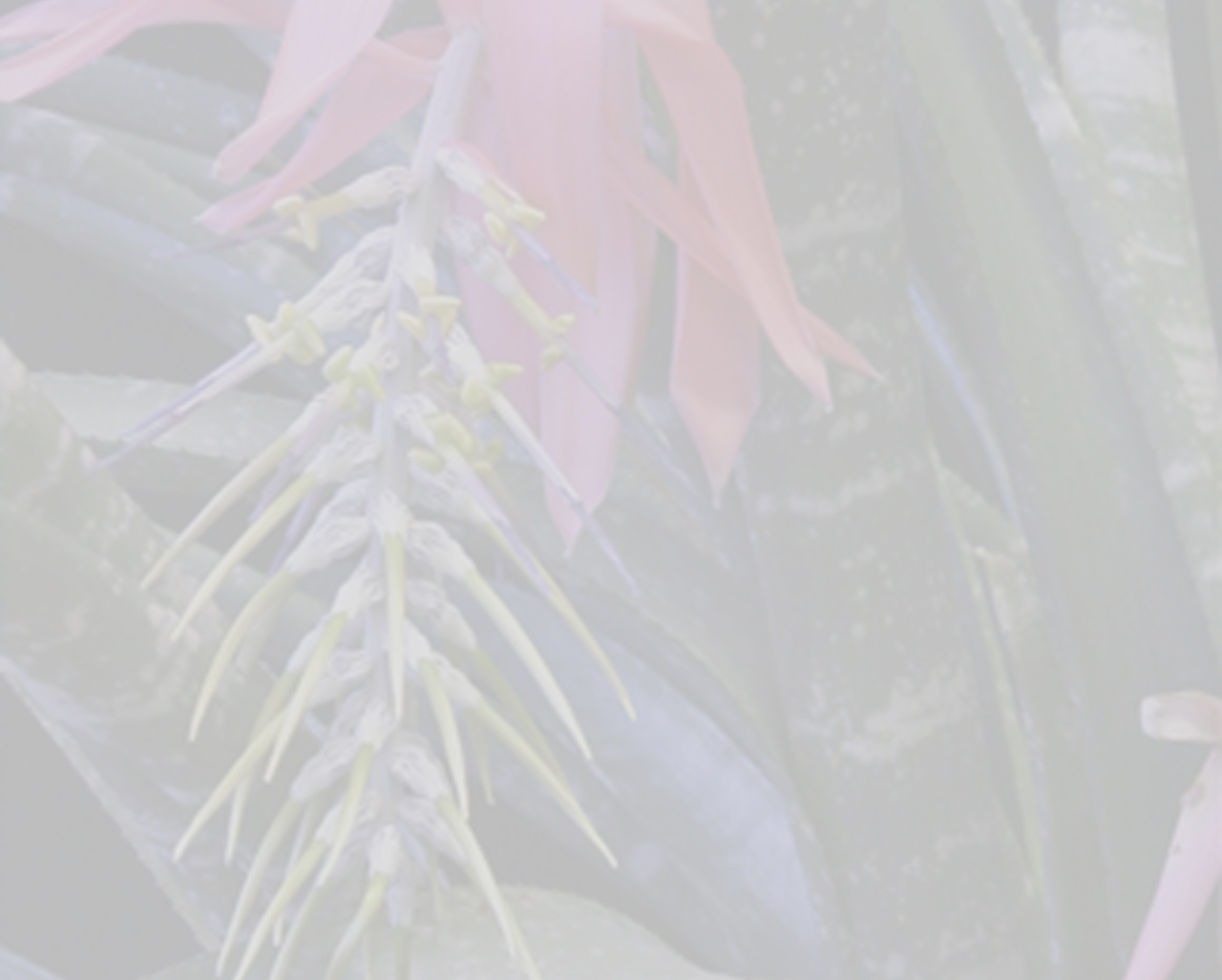Billbergia sanderiana E.Morren
Literature references:
*move your mouse pointer over the page numbers to see comment
Comments:
- BILLBERGIA ELEGANS Mart. ex Schult by A. Abendroth in Brom Soc Bull 7(3): 38-9. 1957
Note that at this time Lyman Smith was not certain what was B. elegans and what was B. sanderiana. From the information given it is clear the plant is a B. sanderiana. This anomaly was the cause of plants in Australia at this time being wrongly identified - Butcher
This is a fascinating plant of striking contrasts. The big cluster of rock-gray, saw-toothed funnel-like plants do not suggest its fairy-like flower of flowing lines and subtle hues whose beauty stands out best against a background of dark foliage. There the blue tips of the glossy, almost transparent petals look bluer and the anthers shine like gold. Despite its striking appearance this bromeliad is not easily discerned by human eye in the rain forest. The humming birds, however, find it.
These iridescent, miniature "helicopters" feathered in dark blue, rusty brown or bluish green, often come to visit the flowers. They recognize the plant even when it is not in bloom for they come to look even then as if in search of something.
Flowering occurs during the first part of winter, and all plants bloom about the same time. The inflorescence develops within a week counting from the day it is first seen in the depth of the water-filled tube to the opening of the first flower. Blooming extends over a period of ten days to a fortnight, depending on the size of inflorescence. There is a flower in every branchlet. Afterwards colors fade but the graceful lines keep for another while.
When growing on an exposed spot on a tree, individual shoots, of this B. elegans, have a narrower shape, like a thick tube, than when grown near the ground. Planted in soil the rosettes grow broader, and the upper half of the blades curve outward before ascending again, while corners of the blade tips descend. Also, the leaves take on a rich green with a faint gloss having only a suggestion of gray. New shoots which sprout at the base of old ones mature in . two or three years.
The large scape-bracts enfold a branchlet with one to four flower buds. The peduncle and pedicels are a pale brownish green. The flower bracts are small, and pastel pink. Dark blue tips of buds, sprinkled with a few white scales thrust forth from the scape bract while the peduncle is half of its final length. The first flower to open is one of the apical bunch, and it does so while the bracts still converge. On the following days the bracts rise to a horizontal position and one flower opens in each branchlet, each flower lasting three days. The last one to bloom is also one of the tip. The petals have a silky shine and are rather tough to the touch, although they look practically transparent. The nectar scales on the petals are truly transparent and come in pairs and are toothed at tip.
Besides the humming birds, other fauna visit this Billbergia. In the depth of the corollas live small white mites as well as a larger, grayish one which resemble a tick in shape.
One of my plants was inhabited by a tree frog, larger than Flectonotus which sang in March, giving one short call at irregular intervals.
A half-grown shoot was occupied by a female Flectonotus from November 14 to December 10th in 1955. On December 6th she was first seen with twelve eggs on her back. For several days she was always found in the same spot in this Billbergia a little above the water line. The eggs disappeared from her back, a few at a time, on successive days. On December 10th only two eggs were left. After that she was not seen again. Evidently this Billbergia is a favored haunt for this species as I have seen other Flectonotus frog ladies in other B. elegans tubes.
Bats, also, come at night; they carry away ripe Billbergia fruit to their resting places where they drop the empty shells completely flattened, devoid of jelly and seeds. However, the seeds are not lost; they were found to be in the droppings and when planted they germinated within ten days. This gives rise to contemplation as to how the bromeliad flora is spread and constantly replenished by flying creatures other than the well-known birds. (Brom Soc Bull)

